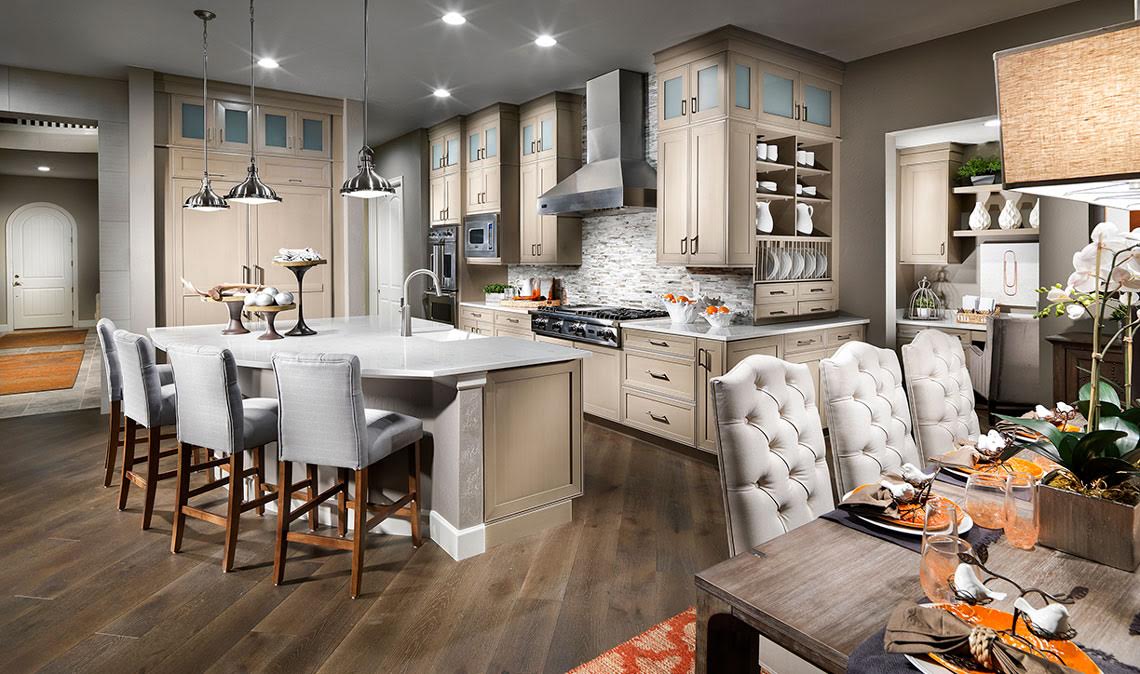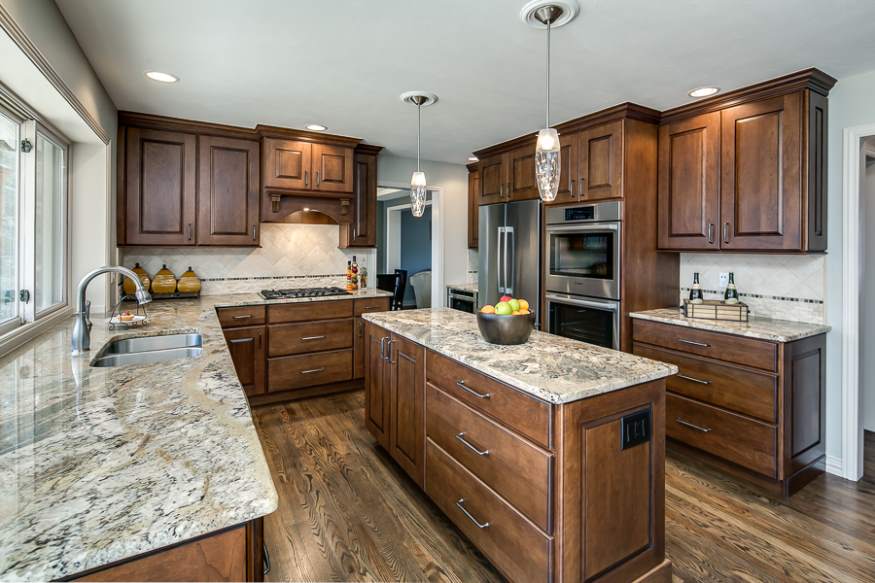
We have been on a series talking about the ancient art of Feng Shui. We know that a few posts are not enough to learn even all about the basics of this Asian science developed 3000 years ago. But it has given us some pointers on where to begin and what to look for when you design or remodel a Feng Shui Style kitchen.
We already learned a little about our energy map or Bagua, the Kua number, basic principles of where to place your kitchen, as well as different colors you can work into your kitchen design to balance energies. Today, we are looking at the kitchen appliances. The incorrect placement of your appliances can create inauspicious elements and negative Chi. Therefore, here are some important topics to consider when working on your kitchen layout. In fact, some find that the placement of your appliances can be more important than the direction your kitchen is facing.
 Avoid the escape of energy through your kitchen and out the door
Avoid the escape of energy through your kitchen and out the door
Before discussing any kitchen appliances, we need to think where to place any doorways. It’s imperative that the entrance to the kitchen doesn’t face directly onto the front or back door of the house. That creates an unbalanced Chi as good energy rushes through the kitchen and out of the house. It is believed that as the energy escapes your house, it results in illnesses and misfortunes entering through that same door.
Where to place the fire
When making decisions on the placement of the bigger appliances, like oven and stove, considered fire elements, it is important to keep in mind that the water elements conflict with fire elements. You don’t want them beside sinks, dishwashers or refrigerators because they would extinguish the beneficial fire energy.
The mouth is the area where the energy enters the appliance. This means any gas lines, oil lines or electrical lines and outlets. Therefore, the oven and stove mouths should face Northeast, Southwest or South. Don’t place the oven or range in the Northwest sector known as “Heaven’s Gate.” Good luck energy resides in there, making this the last place you want to set any fire.
Tips for boosting your kitchen’s Chi
If your kitchen’s energy is still unbalanced, you can help boost the auspicious elements of your kitchen’s Chi by placing mirrors. The impression of an extra set of burners is believed to increase your finances. Placing plants or herbs in copper pots along the South and East walls can help you bring prosperity to your home and attract a positive Chi.
 The importance of keeping your kitchen tidy
The importance of keeping your kitchen tidy
Being messy creates energy conflicts. Therefore, avoid being lazy and keep pantry doors closed at all times. Don’t leave brooms and mops out. Keep them stored in closets, and don’t let dirty dishes pile up. If the laundry area is located in or beside the kitchen, don’t allow dirty clothes to pile up and don’t hang a towel on the oven handle.
Bottom line, have fun! Whether you take these Feng Shui believes seriously or not, you should always be intentional about designing a comfortable and healthy environment for your kitchen. Feng Shui beliefs say that boosting the positive energies will bring in the good times. We say, having an awesome kitchen design, with cabinets you love and a design that meets your needs will turn your new kitchen into your favorite room in the house.



































